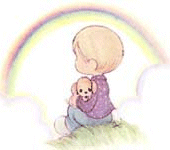Depression
How Prevalent are Mood Disorders in
Children and Adolescents?
7-14% of children will experience an episode of major depression before the age of 15.
20-30% of adult bipolar patients report having their first episode before the age of 20.
Out of 100,000 adolescents, two to three thousand will have mood disorders out of which
8-10 will commit suicide.
Depression
There is emerging evidence that major depression can develop in prepubertal children and
that it is a significant clinical occurrence among adolescents. Recent epidemiologic
studies have shown that a large proportion of adults experience the onset of major
depression during adolescence and early adulthood.
By studying high-risk populations for developing childhood mood disorders, researchers
hope to learn more about the onset and course of depression. Myrna M. Weissman, Ph.D. of
Columbia University (a NARSAD Established Investigator and 1994 Selo Prize Co-Winner) has
found an increased prevalence of major depression as well as a variety of other
psychiatric problems in the children of depressed parents compared with those of normal
parents. Specifically, she has discovered that the onset of major depression was
significantly earlier in both male and female children of depressed parents (mean age of
12.7 years) compared with those of normal parents (mean age, 16.8 years). She has also
observed sex differences in rates of depression to begin in adolescence. Before 10 years
of age, she found a low frequency and equal sex ratio, however by 16 years of age, there
was a marked increase in major depression in girls, as compared to boys of the same age.
The essential features of mood disorders are the same in children as in adults, although
children exhibit the symptoms differently. Unlike adults, children may not have the
vocabulary to accurately describe how they feel and, therefore may express their problems
through behavior. The following behaviors may be associated with mood disorders in
children:
In Preschool Children:
Somber Appearance, almost ill-looking; they lack the bounce of their nondepressed peers.
They may be tearful or spontaneously irritable, not just upset when they do not get their
way. They make frequent negative self-statements and are often self-destructive.
In Elementary School-Aged Children and Adolescence:
Disruptive behavior, possible academic difficulties, and peer problems. Increased
irritability and aggression, suicidal threats, and worsening school performance. Parents
often say that nothing pleases the children, that they hate themselves and everything
around them.
Treatments
It is important for children suffering from mood disorders to receive prompt treatment
because early onset places children at a greater risk for multiple episodes of depression
throughout their life span. Children who experience their first episode of depression
before the age of 15 have a worse prognosis when compared with patients who had a later
onset of the disorder.
At the present time, there is no definitive treatment for the spectrum of mood disorders
in children, although some researchers believe that children respond well to treatment
because they readily adapt and their symptoms are not yet entrenched. Treatment consists
of a combination of interventions. Medications can be useful for cases of major depression
or childhood onset mania, and psychotherapy can help children express their feelings and
develop ways of coping with the illness. Some other helpful interventions that may be used
are educational and family therapy.
Children suspected of mood disorders should be evaluated by a child psychiatrist, or if
one is not available an adult psychiatrist who has experience in treating children. It is
important that the clinician has had special training in speaking with children, utilizing
play therapy, and can treat children in context of a family unit.
~ Links ~
Major Depressive Disorder
http://www.mentalhealth.com/dis/p20-md01.html
Depression in the Very Young
http://www.mhsource.com/advocacy/narsad/childmood.html
The Harvard Medical School Mental Health Letter, September 1987
http://www.mentalhealth.com/pub/p62-harv.html
Source:
Mood Disorders in Children and Adolescents
by Anne Brown

Back To
Children With Special Needs Main Page